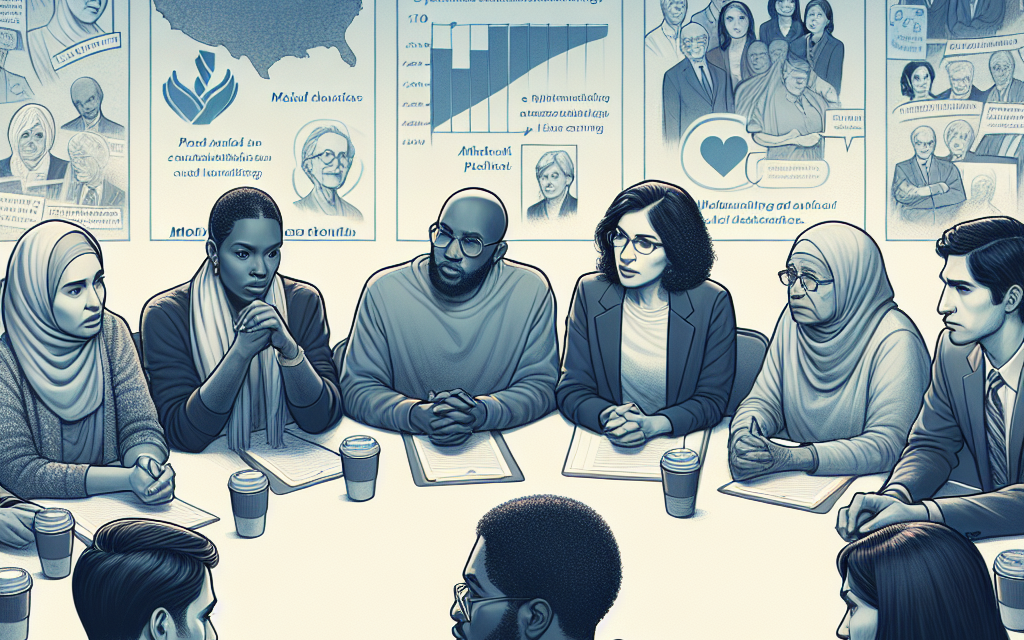Advocacy Groups Warn of Catastrophic Consequences from Medicaid Cuts
Medicaid, a vital program that provides health coverage to millions of low-income individuals and families in the United States, has been under scrutiny in recent years. Advocacy groups are increasingly sounding alarms about the potential catastrophic consequences of proposed cuts to Medicaid funding. These cuts threaten not only the health and well-being of millions but also the broader healthcare system. This article delves into the implications of Medicaid cuts, exploring the potential impacts on vulnerable populations, healthcare providers, and the economy.
The Importance of Medicaid in the U.S. Healthcare System
Medicaid is a joint federal and state program that provides health coverage to eligible low-income individuals, including children, pregnant women, elderly individuals, and people with disabilities. Established in 1965, Medicaid has become a cornerstone of the U.S. healthcare system, serving over 80 million Americans as of 2023.
Medicaid plays a crucial role in ensuring access to essential health services, including:
- Preventive Care: Medicaid covers a range of preventive services, such as vaccinations, screenings, and annual check-ups, which are vital for early detection and management of health issues.
- Chronic Disease Management: Many Medicaid beneficiaries suffer from chronic conditions like diabetes, hypertension, and mental health disorders. Medicaid provides necessary treatments and medications to manage these conditions effectively.
- Maternity and Child Health: Medicaid is a significant source of coverage for pregnant women and children, ensuring access to prenatal care, labor and delivery services, and pediatric care.
- Long-term Care: For many elderly individuals and people with disabilities, Medicaid is the primary payer for long-term care services, including nursing home care and home health services.
Given its extensive reach and critical services, any cuts to Medicaid funding could have dire consequences for millions of Americans who rely on this program for their health and well-being.
Impact on Vulnerable Populations
One of the most alarming consequences of Medicaid cuts is the potential impact on vulnerable populations. These groups often face significant barriers to accessing healthcare, and reductions in Medicaid funding could exacerbate existing disparities.
Vulnerable populations affected by Medicaid cuts include:
- Low-Income Families: Many low-income families depend on Medicaid for basic healthcare services. Cuts could lead to increased out-of-pocket costs, making it difficult for them to afford necessary care.
- Children: Medicaid is a critical source of coverage for children, particularly those in low-income households. Cuts could result in reduced access to pediatric care, vaccinations, and developmental screenings.
- Individuals with Disabilities: People with disabilities often rely on Medicaid for essential services, including personal care assistance and specialized medical equipment. Cuts could jeopardize their ability to live independently.
- Rural Communities: In many rural areas, Medicaid is a lifeline for residents who may have limited access to healthcare providers. Cuts could lead to hospital closures and reduced services in these communities.
For example, a study by the Kaiser Family Foundation found that Medicaid expansion has significantly reduced the uninsured rate among low-income adults, particularly in states that opted to expand the program under the Affordable Care Act (ACA). If cuts are implemented, these gains could be reversed, leading to increased rates of uninsured individuals and worsening health outcomes.
Moreover, the emotional and psychological toll on these populations cannot be overlooked. The fear of losing access to healthcare can lead to increased anxiety and stress, further impacting their overall health and well-being.
Consequences for Healthcare Providers
Medicaid cuts do not only affect beneficiaries; they also have significant implications for healthcare providers. Many hospitals and clinics rely on Medicaid reimbursements to sustain their operations. Reductions in funding could lead to financial strain on these institutions, particularly those serving low-income populations.
Healthcare providers face several challenges due to potential Medicaid cuts:
- Financial Viability: Many hospitals, especially those in rural areas, operate on thin margins. Medicaid often pays less than the cost of care, and cuts could push some facilities into financial distress or even bankruptcy.
- Access to Care: As providers face financial challenges, they may reduce the number of Medicaid patients they accept or cut back on services offered. This could lead to longer wait times and decreased access to care for vulnerable populations.
- Workforce Implications: Financial strain on healthcare providers may lead to layoffs or reduced hiring, impacting the availability of healthcare professionals. This could exacerbate existing shortages in certain areas, particularly in primary care and mental health services.
- Quality of Care: With reduced funding, providers may struggle to maintain the quality of care they offer. This could lead to increased medical errors, lower patient satisfaction, and worse health outcomes.
A case study from a rural hospital in Texas illustrates these challenges. After experiencing significant cuts to Medicaid funding, the hospital was forced to lay off staff and reduce services, leading to longer wait times for patients and a decline in overall health outcomes in the community. This situation highlights the interconnectedness of Medicaid funding, healthcare provider viability, and patient care quality.
Economic Implications of Medicaid Cuts
The economic implications of Medicaid cuts extend beyond the healthcare sector. Medicaid is a significant driver of economic activity, supporting jobs and generating revenue in local communities. Cuts to the program could have far-reaching consequences for the economy as a whole.
Key economic impacts of Medicaid cuts include:
- Job Losses: Medicaid funding supports millions of jobs in the healthcare sector, including doctors, nurses, and administrative staff. Cuts could lead to job losses, further straining local economies.
- Reduced Consumer Spending: Individuals who lose Medicaid coverage may have less disposable income to spend on goods and services, leading to decreased consumer spending and economic growth.
- Increased Uncompensated Care: Hospitals and clinics may face increased uncompensated care costs as uninsured individuals seek treatment. This can lead to financial strain on healthcare providers and increased costs for all patients.
- Impact on State Budgets: States that experience cuts to federal Medicaid funding may face budget shortfalls, leading to cuts in other essential services such as education and public safety.
A report from the Center for American Progress estimates that Medicaid expansion has generated billions in economic activity and created hundreds of thousands of jobs across the country. Conversely, cuts to Medicaid could reverse these gains, leading to job losses and economic decline in many communities.
Advocacy Efforts and the Future of Medicaid
In response to the looming threat of Medicaid cuts, advocacy groups are mobilizing to protect the program and its beneficiaries. These organizations play a crucial role in raising awareness about the potential consequences of cuts and advocating for policies that support Medicaid funding.
Key advocacy efforts include:
- Public Awareness Campaigns: Advocacy groups are launching campaigns to educate the public about the importance of Medicaid and the potential consequences of cuts. These campaigns often include personal stories from beneficiaries to humanize the issue.
- Lobbying Efforts: Organizations are actively lobbying lawmakers to protect Medicaid funding and oppose proposed cuts. This includes meeting with legislators, organizing rallies, and mobilizing constituents to contact their representatives.
- Coalition Building: Advocacy groups are forming coalitions with healthcare providers, community organizations, and other stakeholders to amplify their voices and strengthen their efforts to protect Medicaid.
- Research and Data Collection: Many advocacy organizations are conducting research to document the impacts of Medicaid cuts and provide policymakers with data-driven insights to inform their decisions.
For example, the National Association of Medicaid Directors has been vocal in opposing cuts to Medicaid, emphasizing the program’s importance in providing access to care for millions of Americans. Their efforts have led to increased awareness among policymakers about the potential consequences of cuts and the need for sustainable funding for Medicaid.
Conclusion: The Urgent Need for Medicaid Protection
The potential consequences of Medicaid cuts are profound and far-reaching. From vulnerable populations losing access to essential healthcare services to healthcare providers facing financial strain, the impacts of these cuts could be catastrophic. Moreover, the economic implications extend beyond the healthcare sector, affecting jobs, consumer spending, and state budgets.
Advocacy groups are working tirelessly to protect Medicaid and ensure that millions of Americans can continue to access the care they need. As the debate over Medicaid funding continues, it is crucial for policymakers to consider the human and economic costs of cuts to this vital program.
In summary, the stakes are high, and the need for advocacy and action is urgent. Protecting Medicaid is not just about preserving a healthcare program; it is about safeguarding the health and well-being of millions of Americans and ensuring a healthier future for all.





